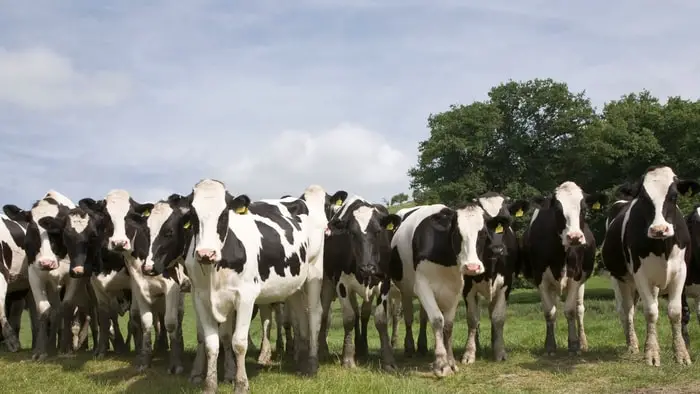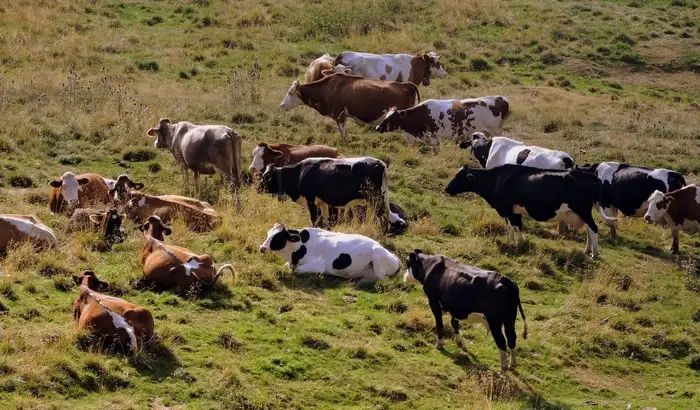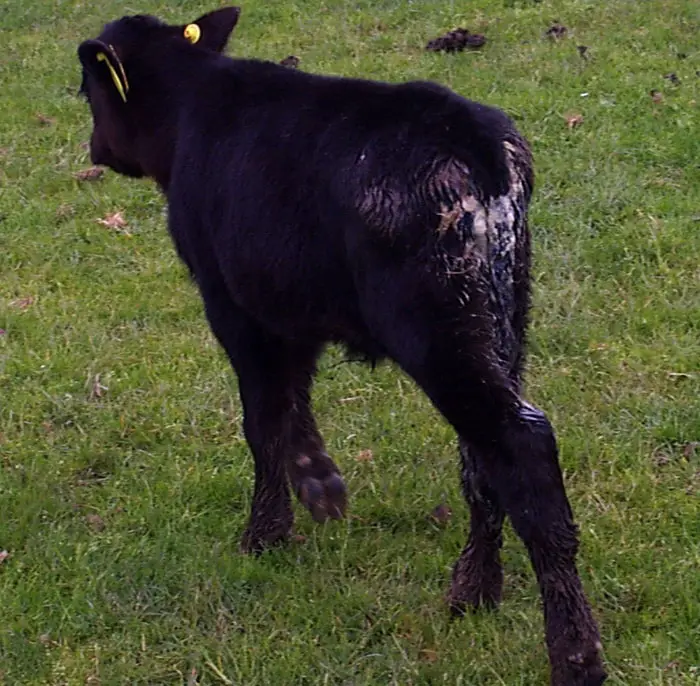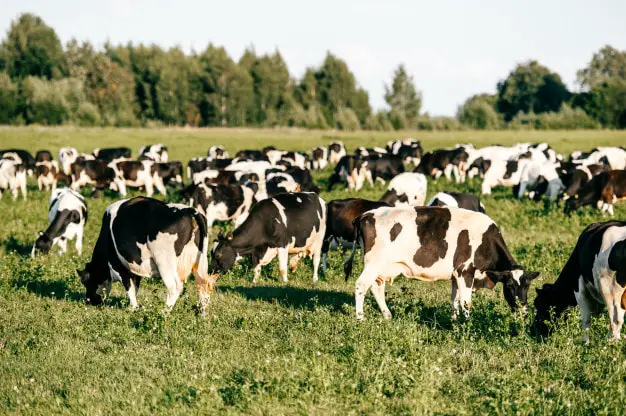Bovine Rotavirus has been recorded in many species of domestic and zoo ruminants, monogastric animals, and man. Calf rotavirus and most likely lamb rotavirus infection have a worldwide distribution. It is responsible for most cases. Rotavirus is associated with about 48% of neonatal calf diarrhea cases, which is also known as calf scour. Animals confined in sheds and barns frequently have a high incidence of neonatal diarrhea because of the exposure to accumulated viruses and bacteria.
Important Information on Bovine Rotavirus Infection
Bovine Rotavirus is a highly contagious disease of many cattle populations. The highly contagious nature of rotavirus diarrhea should be considered when caring for neonatal animals. Mortality from rotavirus diarrhea depends mainly on the secondary infection. In uncomplicated rotavirus infection cases, animals develop diarrhea but most recover without treatment.

Causes of Rotavirus in Cattle
Bovine Rotavirus is a non-enveloped virus that belongs to the genus Rotavirus, under the Reoviridae family. However, the animal is affected by other organisms; like E. coli, Salmonella, Clostridia, or Cryptosporidium. Particularly in very young animals, the mortality can be high.
How Do You Get Rotavirus Infection?
Rotavirus is shed in the feces, and the virus spreads from fecal-oral contact. The disease occurs because of low hand washing or intake of contaminated food and water. The virus sometimes spread through sneezing or coughing, but it’s less common. Healthy calves, even cows, may act as carriers for new calves. The persistent infection has also been suggested.

Pathogenesis of the Bovine Rotavirus
The standard pathogenesis measures of Rotavirus infection in cattle are:
- The Portal of entry for Rotavirus is the mouth.
- The virus replicates primarily in the mature villous epithelial cells in the small intestine of calves. In lamb, caecum and colon are also involved at a minimal scale.
- Viraemia has not been detected, but calf rotavirus has been isolated from mesenteric lymph nodes and the lung.
- Clinical signs of the disease developed due to the erosion in the intestinal walls.
Clinical Signs and Symptoms of Bovine Rotavirus
The most common clinical signs and symptoms observed in the calf and adult cattle are:
- The incubation period is usually 12 to 36 hours.
- The symptoms include- anorexia, depression, drooling a few strings of thick saliva from the mouth, and then diarrhea.
- The onset of illnesses rapid; within 2 hours, a calf can become so depressed that it cannot stand and will then develop diarrhea.
- Pale yellow diarrhea is common, sometimes with mucous and blood flecks.
- Experimentally you found, in Gnotobiotic calf diarrhea that is last for 5-6 hour, whereas in Gnotobiotic lamb, diarrhea persisted throughout the 6 days observation period.
- In field cases, the persistence of diarrhea for more extended periods may be due to secondary infection.

Diagnosis of Rotavirus infection in Cattle
Diagnosis can be made on identification of rotavirus antigen or virions in diarrhoeic feces by several methods-
- Virus isolation and identification of the virus from intestinal content, tissues, or blood by electron microscopy.
- Immunofluorescence Test (IFT) may be done by the serum of suspected or infected cattle.
- Complement Fixation Test (CFT) and ELISA may be done by the serum of affected or suspected cattle.
- RT-PCR is used for the confirmatory diagnosis of the disease.
Treatment and Management of Bovine Rotavirus
The treatment you should be given symptomatically, and the oral fluids are the significant treatment line. It protects corrects acidosis, dehydration, and lost salts.
- Adequate liquid supplements by oral or by intravenous injection.
- Gut-active sulphonamides you may give orally.
- You can give Secnidazole or metronidazole if there is a presence of mixed infection.
- Broad-spectrum antibiotics like Ampicillin or Cephalosporin may be used to treat calf diarrhea will not kill the virus, but they can reduce the secondary bacterial infection.
Prevention and Control of Rotavirus Infection in Cattle
The preventive measures you can follow to reduce the infection are:
- Passive protection against the disease can be done by feeding colostrum or milk that contains rotavirus antibody.
- Oral administration of attenuated rotavirus vaccine soon after birth has successfully reduced morbidity and mortality.
- The efficacy of the oral vaccine depends on the rotavirus antibody in the colostrum and the vaccination timing in relation to the first feeding.
- The problem of colostral antibody neutralizing the vaccine virus can be overcome by placing the vaccine into the amniotic fluid at 7-8 months of gestation. The fetus ingests the vaccine virus and becomes actively immunized.

Final Advice on Bovine Rotavirus Infection
Rotavirus infection is highly fatal in the calf than adult cattle. In adult cattle, morbidity is high, but mortality is comparatively lower. The infection hampers the overall production capability of your farm. Moreover, the cost of treatment and management will reduce the income of your farm. So, it is better to take necessary preventive measures against the infection. You can go for mass vaccination to calves and young stocks with a known-potential vaccine.